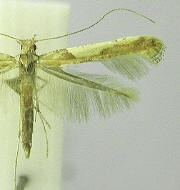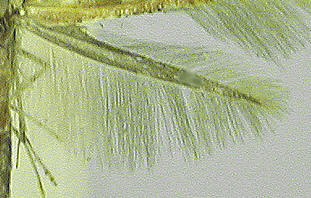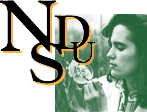|
A Key to the superfamilies of the Lepidoptera
with special reference to North and South Dakota
|
8 (7") Hindwing
without discal cell, fringe along outer margin > broadest wing
width.
Go to
9
|
|


|
| Caloptilia negundella (Chambers),
moth and hw with long fringe and lacking discal cell.. |
8' Hw discal cell present, hw fringe
at inner angle > 1/4 wing width; fws rectangular or
elongate, rarely lanceolate; CuA2 from distal 1/5th of discal cell
unless wings strongly
rectangular. See also 8" below.
Go to 10. |
|
8" Hw discal
cell present; fw with CuA2 arising 1/2 to 2/3 from wing base; fws
triangular. Hw fringe
at inner angle < 1/3 wing width.
Go to 11.
|
Return to beginning of
Key
Return to Key introduction
|
